
Wearable technology that ignores emotional needs is a "major error"
News: people will soon have up to ten miniature devices on their bodies and clothes monitoring their health, organising their social lives and responding to their emotional needs, according to Gadi Amit, a leading designer of wearable devices (+ interview).
"In about ten years we may find ourselves with maybe ten of these devices on our body, or maybe woven into our clothes, maybe even under our skin," said Amit, principal and owner of San Francisco studio New Deal Design.
"They'll do some medical monitoring, they could be administering some medical treatments for acute conditions, they'll deal with our social life around us, they'll deal with our digital persona."
These devices will be linked together in a "personal area network" and connected to the internet via the user's cellphone, Amit predicted.
Speaking to Dezeen at the SXSW Interactive festival in Austin, Texas, Amit said: "All of these [devices] will be combined into what I call our personal area network that will be kind of a halo surrounding you, and connecting through your mobile phone to the cloud."
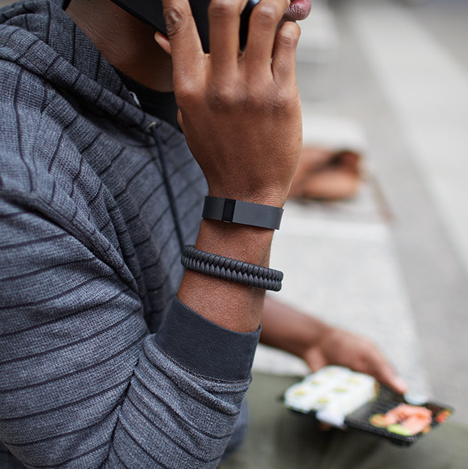
But Amit, who designed the bestselling Fitbit activity tracking devices as well as several other wearables, also warned that the technology industry needed to pay more attention to the emotional needs of users in order to avoid conflicts such as the recent incident in San Francisco, where a woman was attacked for wearing Google Glass in a bar.
"I think the biggest problem with this industry is that it has focussed too much on IQ," he said. "It doesn't focus much on the EQ [emotional intelligence], on the emotional quality of the design and the technology. And that is the biggest challenge. And this actually where designers excel, rather than technologists."
He added: "Some of the issues we have with Google Glass for instance now in San Francisco, there were nearly fist fights over Google Glass coming into bars where people tend to be more intimate. They don't want to be exposed to the whole social web. It's a major error on the part of people who never thought about the social and emotional state of people."
Below is the transcript of the interview with Amit:
Marcus Fairs: Tell us about yourself.
Gadi Amit: I'm the principal and owner of New Deal Design from San Francisco. I call it a technology design company now, because we're dealing with a whole bunch of digital issues and the physical manifestation of them.
Marcus Fairs: You've designed a lot of wearable devices. Tell us some of the products you've designed.
Gadi Amit: I've designed all the Fitbit products for the last six years, including some future ones that are coming, and a device called Whistle, which is a kind of Fitbit for dogs. And we've done both the digital design and the product design for a new company called Sproutling. It's actually a [wearable] device for babies. Other than than in the past we've done the Lytro camera and we've been working a lot in the computer industry and the mobile industry.
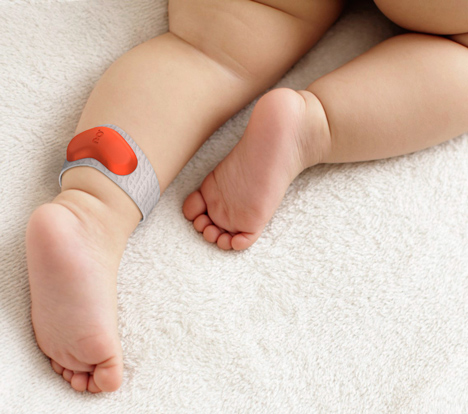
Marcus Fairs: Fitbit monitors your physical activity, but tell us about the wearable devices for dogs and babies. What do they monitor?
Gadi Amit: Typically when people buy something like Fitbit they are aware of their health and they are very much in control. When we are putting a device on a dog or a baby, the user - the dog or the baby - is not aware of it and are not so keen on having it. It's somebody else. So we were actually trying to allow the other person - the owner for the dog or the parent for the baby - be connected to the state of mind or the state of health of the dog or the baby.
Marcus Fairs: So how do you monitor a dog? What kind of data are you looking for?
Gadi Amit: It's actually a very interesting story. We had a whole discussion about what constitutes the right play time. So it's not only declaring that it's play time: it's the amount of running, the amount of jumping, the amount of wagging the tail and so on. So there are algorithms for that. For instance, knowing whether your dog walker actually walked the dog enough, gave the dog enough play time, is something many dog owners want to do.
The interesting thing is that the company, Whistle, that collects all this data, analysed it with veterinarians, and with that mass of data started to see connections between certain mood swings in the dog and certain medical conditions. And it's really interesting how these wearables are becoming amazing open labs that feed data back to professional environments, medical environments, where they can do a lot of research.
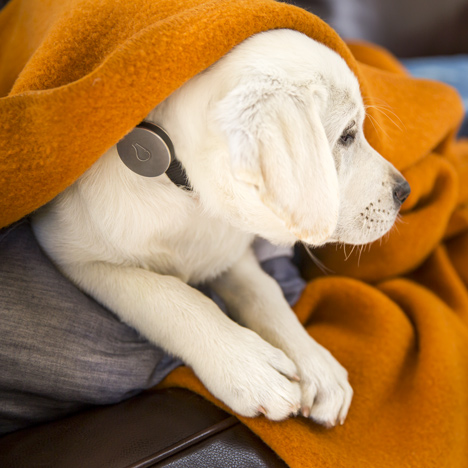
Marcus Fairs: So it could help you to know if your dog's going to get sick, before it actually gets sick?
Gadi Amit: Eventually, yes. Currently this is the beginning of the process and eventually it will become a very effective way of creating research that is beyond anything you can do in a lab.
Marcus Fairs: What happens when the dog, or the baby gets sick? How do you stop the dog owner or the parent worrying too much?
Gadi Amit: For babies for instance we know that they start teething around half a year old. Typically first parents are freaking out because the baby gets a really high fever. So what we try to do is have the first baby instil in the parents the same level of confidence that they will have in the second or third child. These are events like teething that typically are dramatic and once you detect them you tell the parent that it's basically normal for a six-month old baby to do that, so they can relax.
Marcus Fairs: How is Fitbit doing? It's operating in a very competitive field, against Nike's Fuelband and Jawbone's UP.
Gadi Amit: I was actually surprised at the strength of Fitbit. James Park, the CEO, just announced that they have about 68% of the market. It's great. It's a huge surprise because you hear a lot about Nike's Fuelband, about Jawbone's UP, they're very prominent in PR and marketing.
But I think it's testament to the strength of Fitbit as a brand. From early on we promoted a notion of a more introverted technology that is more about the connection between yourself and your goal, rather than having a third party like an athletics company telling you how fit you should be and what's the proper weight for you.
That connection, especially in the early days of Fitbit with women - this more introvert, more soft, more wellness based approach rather than fitness - actually created a very strong brand that people really love. That's maybe the reason they have 68% of the market.
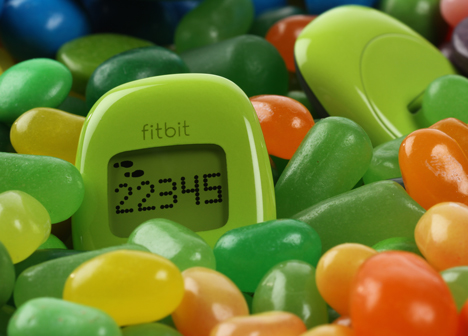
Marcus Fairs: Wearables are one of the big talking points at SXSW Interactive this year. Are they overhyped or are they really going to be the next big thing?
Gadi Amit: I think we are just at the beginning. There is a lot of hype going on but in about ten years we may find ourselves with maybe ten of these devices on our body, or maybe woven into our clothes, maybe even under our skin. And they'll do a whole bunch of things. They'll do some medical monitoring, they could be administering some medical treatments for acute conditions, they'll deal with our social life around us, they'll deal with our digital persona. And all of these will be combined into what I call our "personal area network" that will be kind of a halo surrounding you, and connecting through your mobile phone to the cloud.
Marcus Fairs So you don't think the phone's going to disappear?
Gadi Amit: I think the phone's doing something very important. There is no direct replacement. They're essentially cellular modems. They have large batteries, they communicate with cellular towers, and for the near future, the next ten years, they'll probably still be dominant. There's a big discussion about whether the interaction with the screen or the commands are still going to be done directly with the phone and I still believe the phone will have a major role but it could be that devices that are projecting images on your retina or creating some kind of ambient interface - which I'm very much a proponent of - will be just as good at communicating between you and the surroundings.
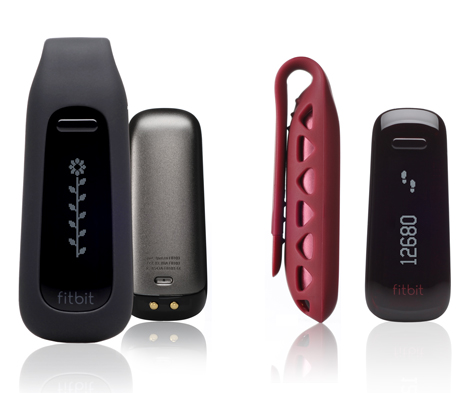
Marcus Fairs: Won't people get confused if they've got ten different devices? What if one breaks or they lose one?
Gadi Amit: That's an excellent question and I think that brings me to the philosophy we have at New Deal, which is actually to create devices that are more ambient. They're there but they don't need to announce themselves every five minutes, they don't need to project data, they don't need to wake you up. You just need to live with them and forget about them.
When you go into a car and start the car there are hundreds of different processes the car is doing in order to maintain itself and make sure it's safe and ready to drive. That's more or less where digital technology should get. Currently digital technology is at an embryonic state. It asks you a lot of questions all the time. You need to get to a completely different level of interaction where it's just there and you forget about it.
Marcus Fairs: There's a lot of talk at SXSW about how there will soon be wearables that monitor your emotional state. Is that the case and how useful is that?
Gadi Amit: People today are generally aware of the connection between mind and body and want to know more about their emotional state and their cognitive state. There are some new devices developing to do that. The big question again is how do you interact with them? Are they continuously telling you you're moody and need to cheer up or do they actually do something in the background to cheer you up without you even noticing?
So I think the biggest problem with this industry is that it has focussed too much on IQ. It doesn't focus much on the EQ [emotional intelligence], on the emotional quality of the design and the technology. And that is the biggest challenge. And this actually where designers excel, rather than technologists.
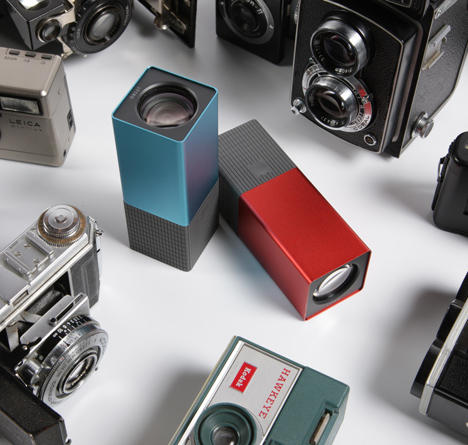
Marcus Fairs: Somebody on a panel was talking about how you could share your emotional data via the cloud, but why would people want to do that?
Gadi Amit: That's exactly the point. And then we go back to the whole issue of introvert/extrovert. A lot of people are trying to leverage data information for businesses. This is in direct contrast to a lot of perceptions we have about our own right to have control over our own personalities. And the industry is far from being mature about that, far from being mature.
Some of the issues we have with Google Glass for instance now in San Francisco, there were nearly fist fights over Google Glass coming into bars where people tend to be more intimate. They don't want to be exposed to the whole social web. It's a major error on the part of people who never thought about the social and emotional state of people. So design has a lot to do with it and I think we will have maturity growing in this industry whether the industry likes it or not.